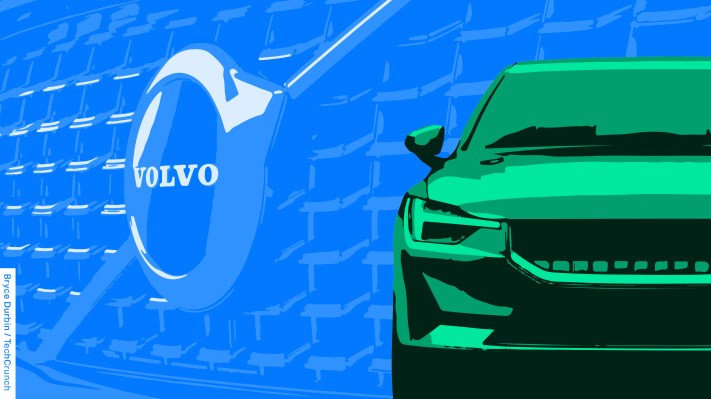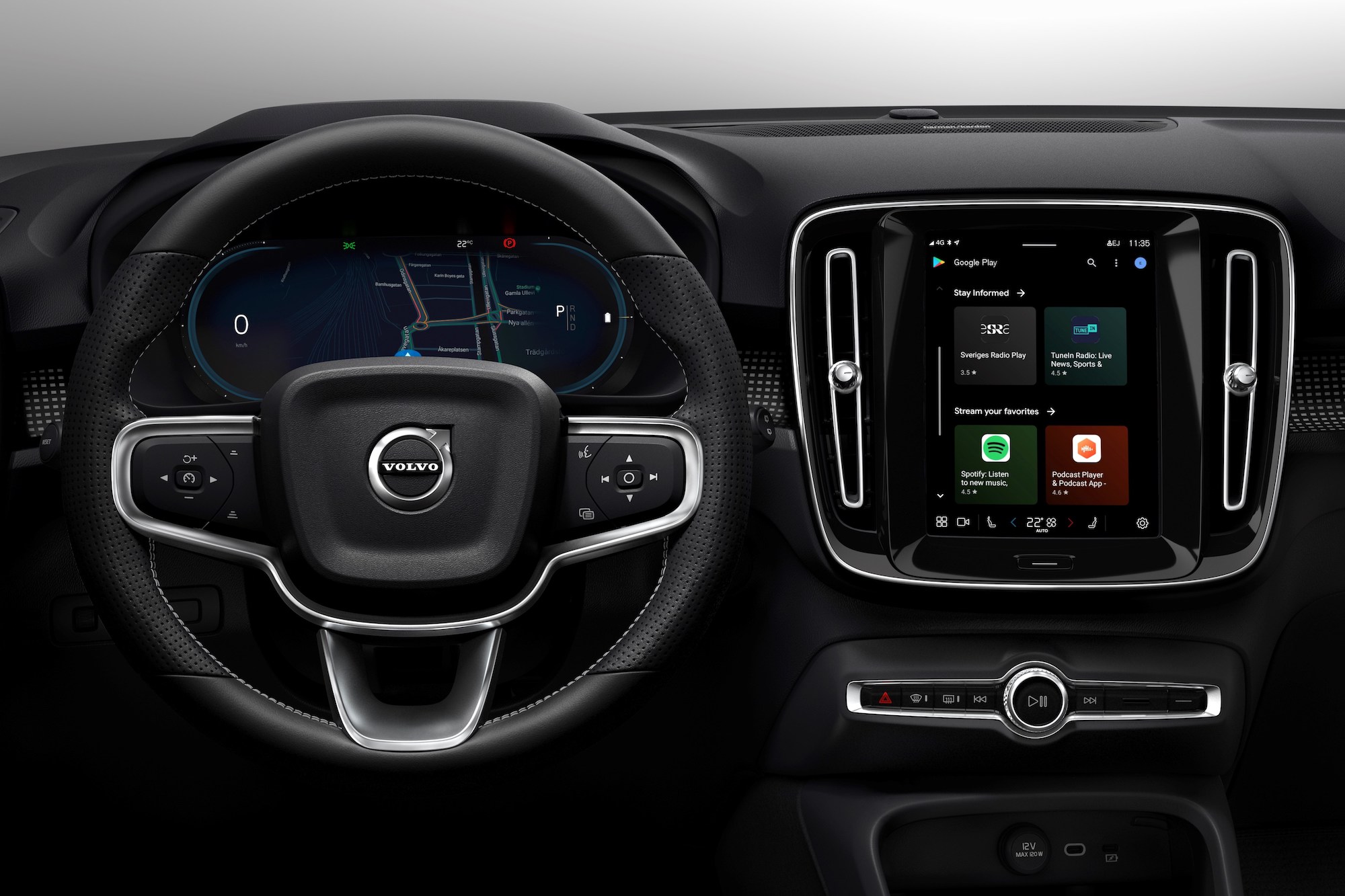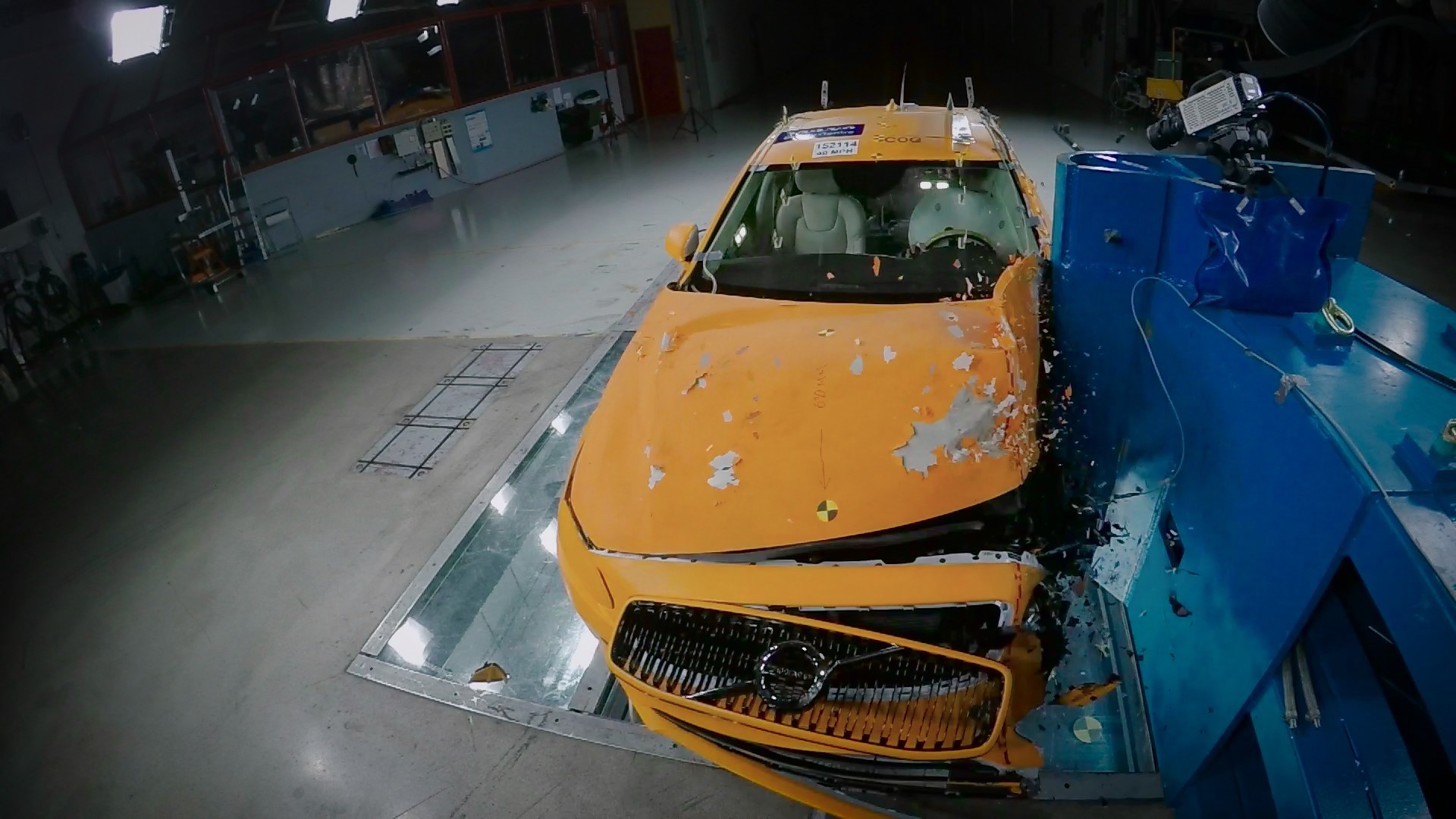Safety in modern cars is no longer simply a question of engineering. It’s a technology and design challenge that is dependent on sensors and software and hinges on a user experience that is clear and intuitive for drivers.
So how does Volvo, a company synonymous with safety, convince customers that it’s innovative, forward thinking and nimble without dropping its core safety message? The stakes: either Volvo keeps up with the speed of change in this brave new world or it risks its reputation as the automaker most identified with safety.
Hints about how Volvo intends to hit that fast-moving, innovative yet safe sweet spot can be found in its approach towards going public — it’s taking the traditional IPO path — and its future vehicle plans. In contrast, its spin-off sibling Polestar, is going public via a merger with blank check company and has tried to position itself as a nimble leader in tech and design.
Polestar’s approach inadvertently helps distinguish Volvo itself as the more cautionary leader in safety. It also sets up Volvo for differentiation, but with access to the latest innovations proved out on Polestar models.
“I think what we’re seeing is a transformation of the industry like we did in the mobile industry some time ago, where new capabilities, new possibilities, new sensors are coming in, so I think it’s a really interesting area,” said Thomas Stovicek, head of UX for Volvo. “At the same time, that can provide a lot of complexity for the user, so when we talk about user experience we very often talk about ease of use for a customer and understanding problems when you put it in the environment in a car.”
But even a brand considered the vanguard for safety can have setbacks. Modern vehicle safety extends beyond the car to the vast amounts of data required to operate these systems. Volvo announced Friday that some of its research and development data was stolen in a security breach. The company was quick to address safety concerns in a statement, “Volvo does not see, with currently available information, that this has an impact on the safety or security of its customers’ cars or their personal data.”
Olaf versus Elsa
Polestar charts a different course when it defines corporate identity, Volvo is “safety and autonomy-centric” whereas Polestar is “technology and performance centric.” Volvo is also “safe and responsible” and Polestar is “sustainable and progressive.”
Polestar is cool and minimal; being in a Volvo is more like a warm security blanket. To continue on the Scandinavian metaphor, think about the plot of Frozen: Volvo’s exudes the comforting allure of Olaf while Polestar is ice-queen trailblazer Elsa.
Volvo’s strategy has been to proceed with caution, which runs counter to how its sister brand Polestar has evolved.
For instance, even though Volvo was involved in the development of the Android Automotive operating system with Google, the Polestar brand introduced the system first, and subsequently earned headlines like “Polestar Wants to Make Electric Cars in a Way Volvo Can’t.”
Polestar as a newcomer, is still relatively small, selling about 10,000 vehicles a year to Volvo’s half million, and is looking to make a name for itself.
“Polestar is and will be the technology leader for the larger Group, a Polestar spokesperson wrote in an email. “A good example already in-market is the Google infotainment system: it debuted on Polestar 2 first; Volvo then followed with XC40 Recharge and now XC60. You’ll see more of that in the coming years as new technologies roll out — Polestar first, then Volvo.”
Lightening the load
In contrast to Polestar’s forward thinking message, when it comes to customer-facing tech, Volvo has shifted the in-car experience to less-is-more. That system is also underpinned by the advent of Android Automotive OS.
Volvo wants the system to lighten the cognitive load on the driver, and employs behavioral psychologists on its research team to understand how information varies from person to person.
“I think at a high level principle, we’re trying to simplify that complexity and provide that in a way to users,” says Stovicek. “There’s a lot more that can be done. Zero collision is something that we’re striving for and I think that there’s a lot of interesting things to do with the new capabilities that are coming in the platforms.”
That means less dinging, buzzing and distracting notifications, unless used to alert the driver of an emergency. A Volvo spokesperson said, “It is not about hiding features per se, but it’s about simplifying the user experience and minimizing distractions for the driver.
Volvo Cars designs and develops everything around the person using it — not around the technology — and strives for an as intuitive user experience as possible.”
For years, as screens have crept into cars, automakers threw the kitchen sink into their suite of infotainment control. When Volvo first introduced the XC90, it was among the first group of automakers to make the screen standard using the older Sensus OS. The brand is now working to further distill the information it presents to the driver. They’ve commissioned NVIDIA to collect anonymized safety data on inputs lidar sensors, radar, and cameras that require graphic processing to improve their understanding.
On a recent drive of the Volvo XC60, I noticed that the infotainment screen was both simplified and brighter than the last generation. I also noticed that the wireless charging system didn’t readily kick in. I had to open the settings in order to activate it. Less choice on the immediate screen is the antithesis of new cars over the past decade.
For decades, Volvo has doubled down on its reputation for making the safest vehicles on the road. When Volvo makes claims about its safety record, it’s a reputation that’s been earned through the company’s breakthrough R&D.
In 1959, it was seatbelts. In 1972, the rear-facing car seat, followed by a booster seat in 1978. Side impact collision protection was introduced in 1994. Collision avoidance and then pedestrian protection followed in 2008. That same year, Volvo set a goal that no one should be seriously injured in their cars. In 2021, the National Highway Traffic Safety Administration’s New Car Assessment Program gave 11 Volvo vehicles a top safety rating.
Hands free
What carmakers are up against is the desire of their customers to effectively override their onboard system using the least safe aspect of driving: personal smartphones. Volvo is prioritizing ways to keep the devices out of consumers hands.
“Users were using their mobile phone in order to achieve certain functionality that we were not providing in the car and that created an unsafe like environment and we wanted to avoid that,” said Anna Arasa Gaspar, UX Manager at Volvo Cars.
This solution was built into the Android Automotive architecture to accommodate third party apps and a platform that would be safe to use while driving.
Volvo worked with the Android, Google Maps, Google Assistant and Google Play Stories teams, and the results show up in a simple, clean experience. “What is more interesting in the products we have developed is that it’s a platform that will live for a long time, Adolfsson says.
Volvo is also addressing the future safety by intervening as soon as the driver gets in the vehicle.
“We have tried to think about how this experience of someone coming into the car for the first time and how can we help them,” Adolfsson said. “In our previous cars, you had to go and find the settings.”
Safety first
Far too often, examples appear that show safety and technology advancement are not always congruous, especially when human judgment is involved.
Here’s where things get sticky. Search “Tesla and self-driving accident.” Despite Tesla’s reputation for taking chances, it hasn’t dinged the company’s astronomical value. (It’s worth adding that Tesla still earns high marks on Model 3 crash safety.)
Tesla and Volvo, like all automakers, are in a sprint to incorporate more ADAS functionality into future products to be on the cutting edge. But the integration of new technology isn’t always aligned with consumer trust, and a general sense of feeling safe.
Only one in 10 drivers would feel comfortable in a fully autonomous vehicle, according to recent study by AAA Foundation for Traffic Safety.
On its website, Volvo says “Recent consumer surveys show that Volvo is the car maker most trusted to safely introduce autonomy.” The company writes that its a few years away from a fully autonomous vehicle.
What Volvo is betting on is that it can convince its customers it can be both early to self-driving systems and safer than ever, all while it also convinces consumers that it can be a premier electric vehicle maker. To get there, it’s proceeding with caution for good reason.
Of course, this thinking begs the question: why does technology that will ultimately make roads safer have to be called tech first? It’s an interesting conundrum on what it means to play it safe.
Correction: A quote was incorrectly attributed to Annika Adolfsson, when it was Anna Arasa Gaspar, UX Manager at Volvo Cars, who should have been cited.



